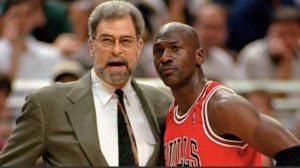Attività Motoria-Cognitiva nella Scuola Primaria
Carmelo Pittera
2014, p. 127
Euro Centro Studi “Gabbiano d’Argento”
I knew Carmelo Pittera more than 30 years ago, I was very young and he had already reached the 2° place in the Volley World Champioship as a coach of the Italian team. In the following years we became experts in the children movement working on his insight. Carmelo has continued to work in this direction and he is published a new program for children called SELL. In these years he started to apply this model in the North of Italy (Gorizia), in Slovenia and in Argentina. I believe that it’s a new approach well based from the theoratical side, it’s innovative and every teacher in school can easily use. I will come back on this project in the next future but for the moment I want to introduce to you, helping you share my same enthusiasm.
What it follow is the presentation by Carmelo Pittera.
My interest toward Minivolley begins at the end of the ’70, when I met the person that we can define as the inventor of Minivolley, Professor Horst Baacke, who introduced in Eastern Germany an early form of volleyball for groups of children aged ten to twelve years.
From a cultural and educational perspective, I was skeptical about the various aspects of early specialization in sports games, mainly because of the definition of Minisport. I was convinced, however, that in children from eight to ten yearsold , the physical education should be considered an asset to the service of the integral development of the children It is really important that the education at the movement help them to a global growth.
Thus it was born the first draft of “Motor Sillabarius”, which represented the starting point of the SELL system (Signal, Reading, Execution, Lateralization). At the Motor Syllabarius was followed by the publication of “The alphabet of movement,” which picked up the results obtained in research on ”analogic- expressive phase” of the movement education. Published in four volumes, the pedagogical section was written by experts in primary education and psychologists.
The SELL is an educational system that has the purpose of teaching, structuring and implementation of neural circuits that affect, starting from the motor area, the cognitive dimensio. It develops in children, not only the opportunity to interact with others (socialization), but also the chance to do better things with others (cooperation). It can be defined as:
- Intuitive activitiy , induced by the Observer, through four mediators: activities (direct experience), iconic (drawings), analogical (dramatization) and symbolic (colors and numbers and more, to represent the variables and their relationships);
- A path through which the Observer builds learning environments in which the children are brought to question rather than waiting canned responses.
- A uniform language, the same for all, which does not require specific words, easily accessible as it adapted to the children’s cognitive and motor potential.
SELL (Signal, Reading, Execution, Lateralization) is structured in four parts:
The Expressive Analogical System is a theoretical-practical path for the activation of the circuits of motor learning and cognitive development from children of 4 years old. It’s composed of various educational track by using the environmental opportunities or the body combined with the wall and the ground, or building games with figures and symbols with a stick combining them with their own body and that of the teammates; or analogies with the animal world, combined with natural colors and their body; or games with simple teaching material (balloons, cards and so on).
The optical and acoustic Symbolic Analogical System for the improvement of basic motor patterns from 8 to 12 yearsold : run, jump, throw, catch. The actions are related to the lateralization and performance oculus-manual and oculus-breech, equilibrium, systems of acceleration and deceleration of the gravity center as well as the distinct body segments. All this is achieved through symbols, simple elements and specific groups are created in a special way by the system SELL.
The lateralization System, with and without the group. This system was created to facilitate the harmonious development of the growing child’s motor and performance relating to “degrees of freedom”, with particular attention to the problems of the non-dominant body side.
The support system in the development of analogical Expressive, analogical optical and acoustic Symbolic of paper materials and computer equipment to facilitate the learning in the classroom and at home.
The materials consist of:
- The light and the puppet play.
- The directional eyes, hypothetical or actually represented on the shirt or on the tip of the shoes.
- The mental visualization: the mind’s eye.
- The activity oculus – manual / breech developed with the use of conventional elements (balls, rubber bands and so on) or non-conventional (newspapers, empty bottles and other).
The game of lights and puppets, directional eyes and mental visualization must be known and internalized by children before beginning the teaching units. Traffic lights and the “game of the puppet.”
During our on field lessons, we have verified that the imitation of children is often inaccurate. With researchers of SELL System we have tried to solve this problem, looking for solutions suited to the children characteristics.
After several attempts, we arrived at the “Game of the traffic lights.” The choice of this symbol was adopted after being tested that all knew it. We have identified the symbol of traffic lights along with the image of ‘”Vitruvian Man” by Leonardo da Vinci, that we modify using the three light colors, with the aim of relating the different parts of the human body with these colors.
The symbols used, in addition to increasing the attentional focus, has a considerable influence in the development of imagination and, consequently, in the creativity of forms. It allows children to improve the knowledge of the structure of their body, and the teacher, together with the children, to develop new kind of play, improving the stabilization of teaching content.





